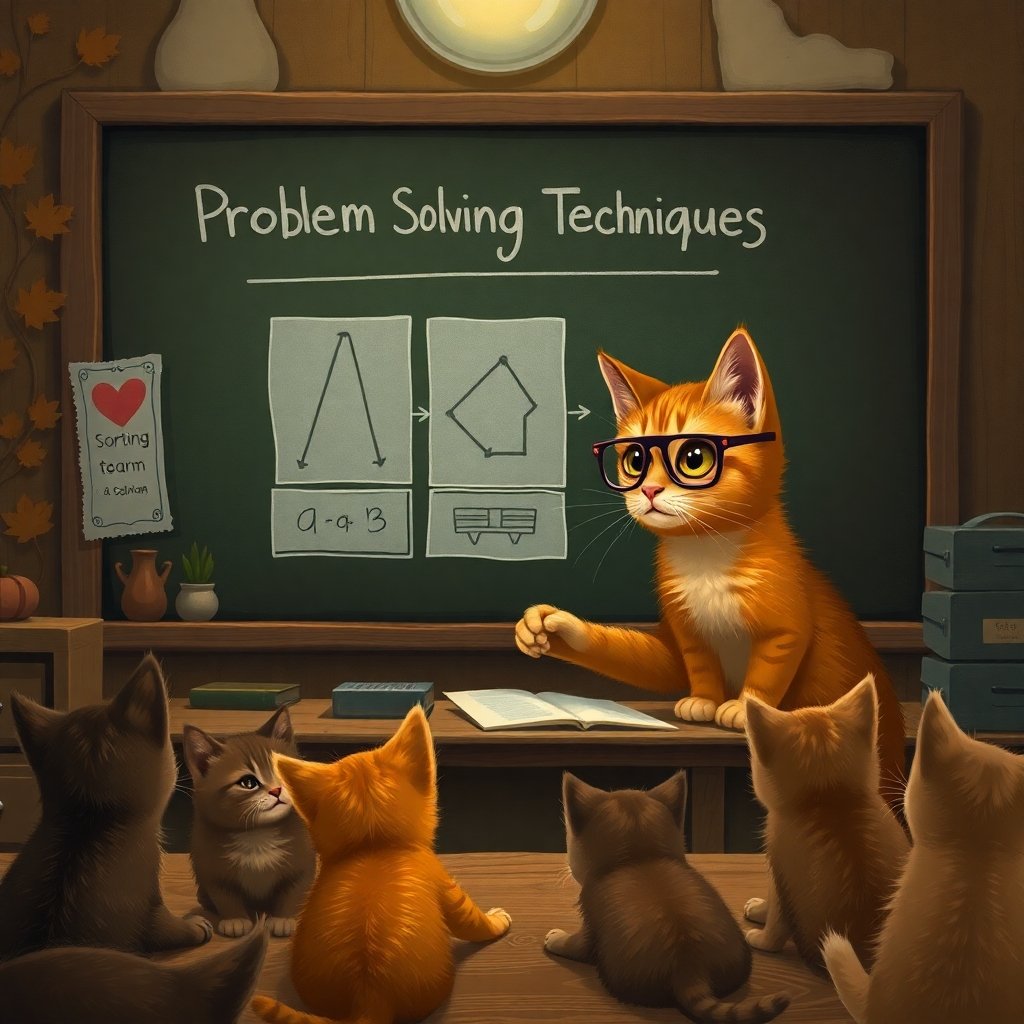Problem Solving Techniques
Dheemanth M D >> Problem Solving TechniquesThis section focuses on common patterns and strategies that can simplify solving complex problems. It provides explanations and links to relevant questions. Here is the initial structure:

Techniques:
- Sliding Window
- Description: Efficient for problems involving subarrays or substrings.
- Steps to Solve: Define the window, expand/shrink it based on conditions.
- Practice Problems:
- Find the maximum sum of a subarray of size
k. - Longest substring without repeating characters.
- Find the maximum sum of a subarray of size
- Two Pointers
- Description: Ideal for problems involving pairs or finding optimal solutions.
- Steps to Solve: Use two pointers starting at different positions.
- Practice Problems:
- Merge two sorted arrays.
- Container with most water.
- Binary Search on Answer
- Description: Effective for optimization problems with a monotonic function.
- Steps to Solve: Define the search space, check mid-point, and adjust bounds.
- Practice Problems:
- Minimize the maximum distance to gas stations.
- Split array into
ksubarrays with minimized largest sum.
- Dynamic Programming
- Description: Break down problems into smaller overlapping subproblems.
- Steps to Solve: Define the state, recursion, and memoization.
- Practice Problems:
- Longest increasing subsequence.
- Coin change problem.
- Greedy Algorithms
- Description: Build up solutions piece by piece, always choosing the best current option.
- Steps to Solve: Identify the greedy choice and prove its validity.
- Practice Problems:
- Activity selection problem.
- Minimum number of platforms required at a railway station.
- Backtracking
- Description: Explore all possibilities by building a solution incrementally.
- Steps to Solve: Add constraints and backtrack when invalid.
- Practice Problems:
- N-Queens problem.
- Generate all subsets of a set.